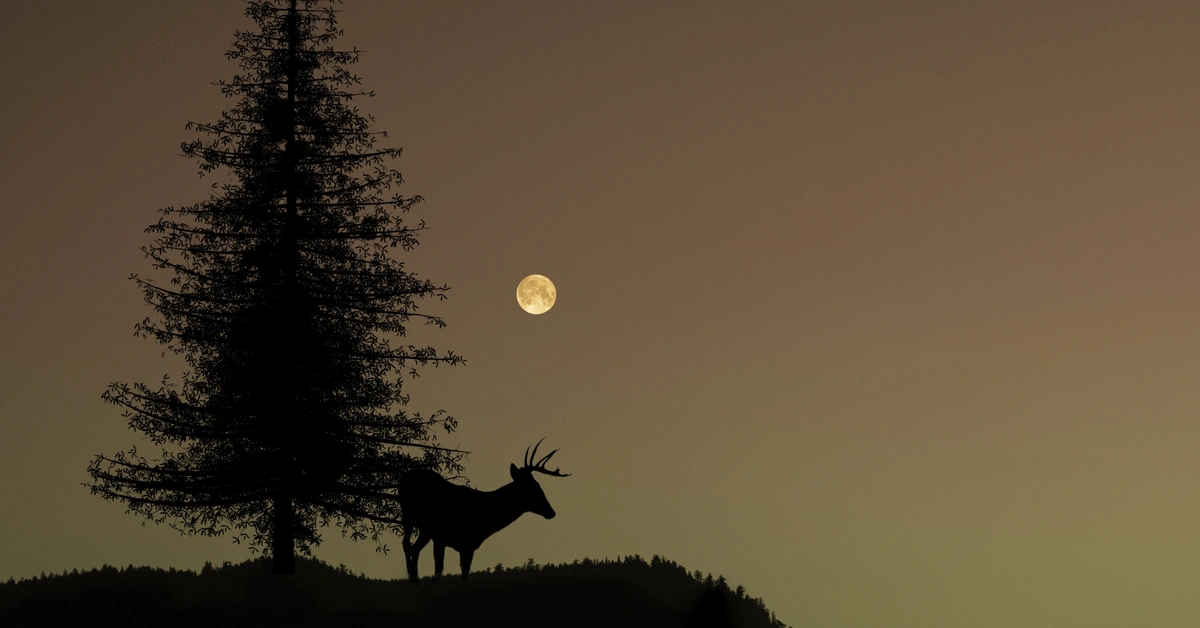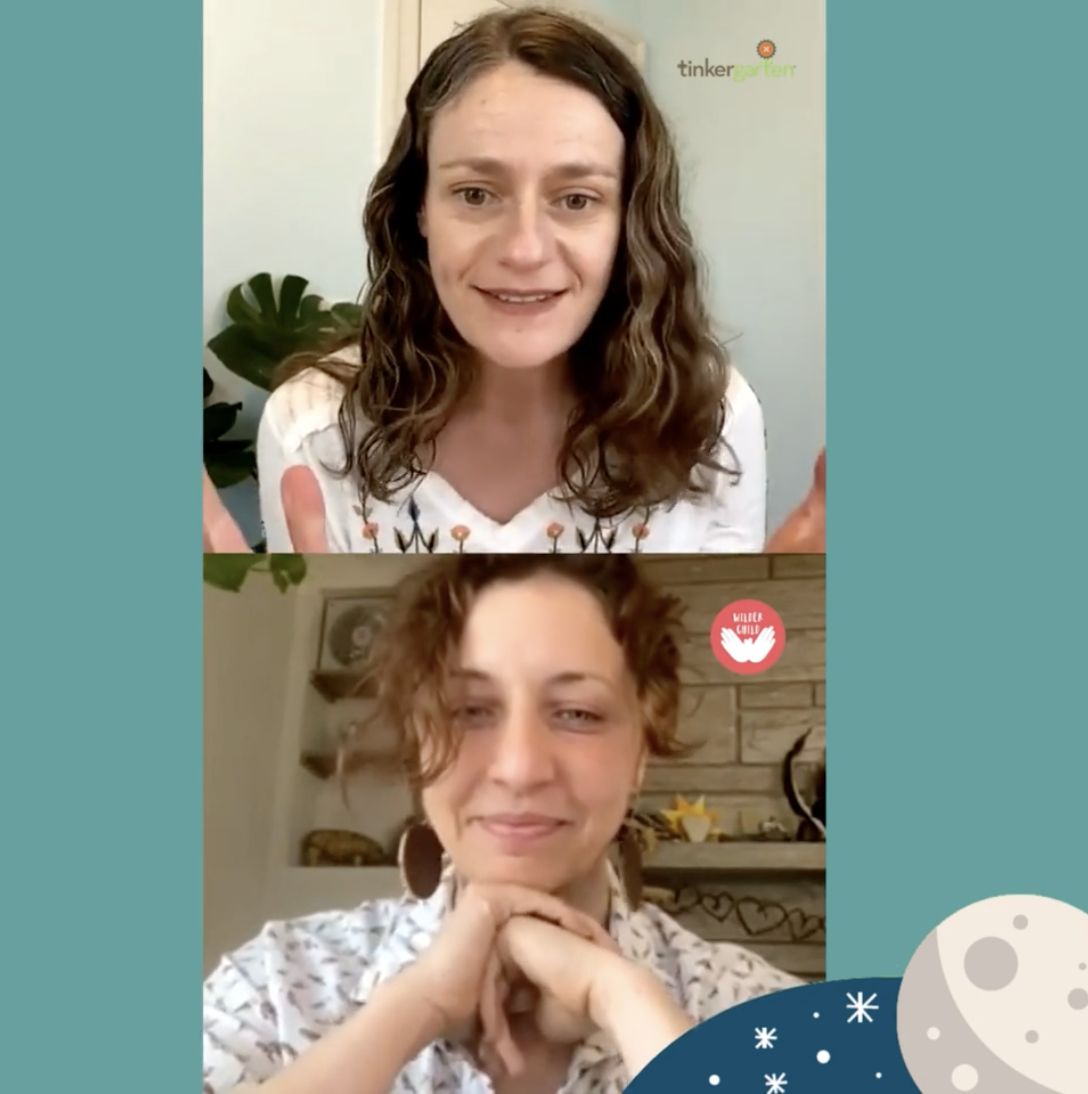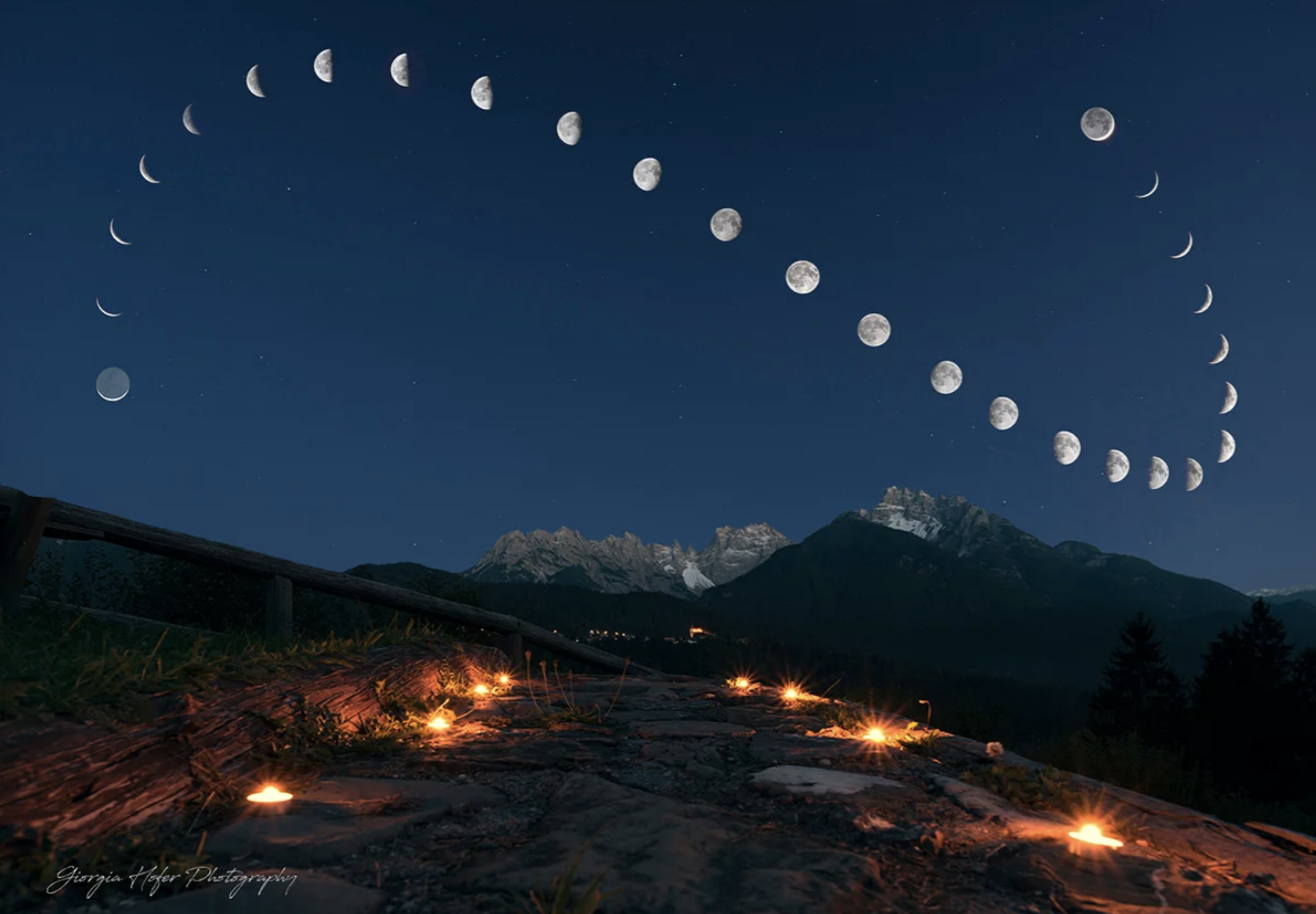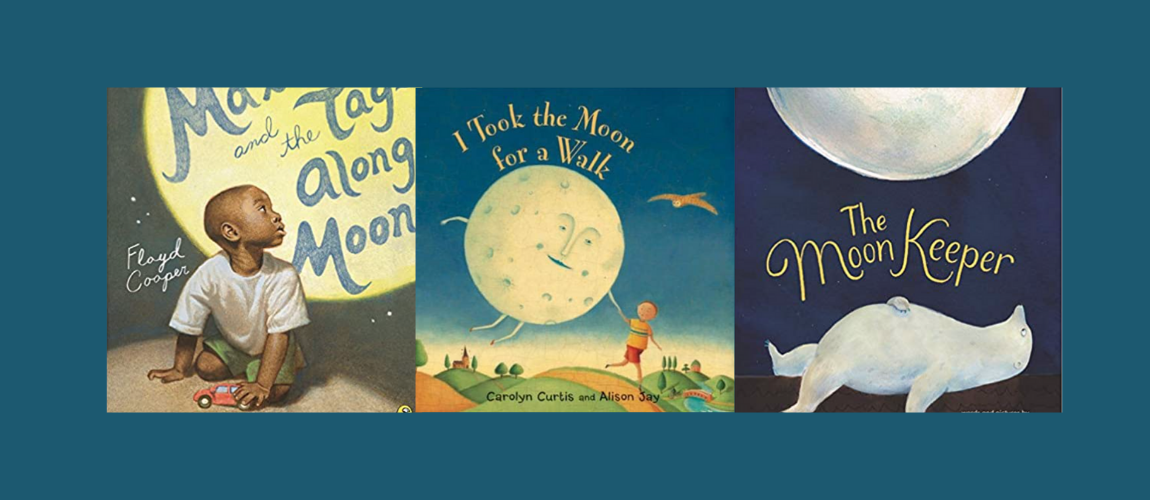Whenever the moon is full, it’s a monthly invitation to slow down, look up and really connect the wonder of that glowing rock in space with the changes we see in the world around us. Kids love to see the moon at its fullest (especially if it means staying up a little later than usual), and the moon packs a lot of lessons about our world.
If you follow along with our free monthly outdoor activity calendars, you know that celebrating the moon is something we do every month. According to space.com, the seventh full moon of 2024 peaks at 6:17am ET on Sunday, July 21st and the best time for viewing is just as it rises over the horizon on Sunday evening! This month's full moon is most commonly known in North America as the Full Buck Moon.
Read on for more about how to enjoy this special July full moon.
1: The Full Buck Moon (and other names!)
Deer begin to grow new antlers each spring and by mid-July, most will be sporting a mature and fully-formed set that are ready to harden — what a time of growth and change! This is where the name Buck Moon comes from.
July brings many changes across different climates, so it’s no surprise that the Full Buck Moon is known by other names that celebrate these events, too! Several Native Nations in the Pacific Northwest, such as the Yakama, Umatilla, Warm Springs and Nez Perce have strong ties to salmon and they play an important role in culture, ceremonies and sustenance. The fish return with the July Salmon Moon each summer and are ready to be harvested. Our friends in the southern hemisphere, however, observe the winter Wolf Moon in July—which we celebrate in January!
There are so many names and celebrations for each full moon, and we like this list for the range of cultures it includes.
10 Ways to Celebrate the Full Moon
Take advantage of all the learning opportunities the moon has to offer with these 10 great ways to celebrate the moon with kids:
1: See the Full Moon Rise
The Old Farmer’s Almanac lists the dates and time for the full Buck Moon as Sunday, July 21st. The best time to view will be when it appears full just after sunset on Sunday evening.
2: Catch the Moon During the Day
If the moonrise proves hard to catch, make it a habit to wait a few days and try to catch a glimpse of the still-big moon in daylight. For little kids, this may be the best way to see the moon! This link helps determine moonrise in your ZIP code.
3: Explore the Connection to Nature
The full moon invites us to slow down and reflect on the changes we see in our world, like the proud buck’s new antlers that emerge each summer! Explore this moment by:
-
Reading Books that Feature Bucks: The Hike by Alison Farrell is a wonderful picture book adventure to “Buck Mountain.” Along the way, the explorers see many plants and creatures, including mysterious tracks and a buck! They document their observations in a nature journal — a lovely way to reinforce observing and celebrating what we see around us! Watch a read aloud from the San Francisco Public Library here.
-
Learn Facts about White Tailed Deer: Did you know they are amazing swimmers and browse for food at dusk and dawn? Look at photos and learn more about their animal superpowers from the Washington Nature Mapping Program.
-
Look for deer tracks in the soil near you! To help, a deer's track has two sides that, together, look a bit like an upside-down heart. The sides of the track are convex and the front tips of a deer's hooves point towards the inside of the track.
-
Buck Shadow Play: Head outside and have kids find their shadows, then give time to play around to see how their shadows move and behave. Wonder together if your shadows can turn into a buck! Try asking, "Can you make your shadow have antlers? Can you make your shadow prance and dash like a buck?"
4: Get Inspired
During the 2020 Worm Moon, I had the pleasure of talking with Nicolette Sowder, creator of Wilder Child and the Kids’ Moon Club and marvelous human, as part of our weekly Tinker Talk series. Enjoy Nicolette’s moon-loving wisdom in this video!
5: Let Something Go
While a new moon is a great time to start fresh or kick off something new, the full moon can serve as a reminder to let go of something that is burdening you or to take an idea or practice you've wanted to start and give it a go. We're one month into spring—a great time to begin planting and tending to new seeds. Gardeners and farmers have been following the moon cycle for thousands of years, knowing that the moon's pull helps water in the soil better reach new seeds and seedlings during a full moon—amazing!
6: Take Notice of the Cycle
Make a habit to check in on the moon throughout the next month. Notice how it changes, when it’s in the sky during the daylight and what shape it takes at night. Our free monthly activity calendars include an image of which phase the moon is in each day to help you keep track. You can also think of it as simply welcoming the moon into your life in a more meaningful way. Nicolette advises, "When you are first greeting the cycle and getting comfortable with it, just do the welcoming and the emotive piece and root yourself inside of the cycle—don't feel like you need to rush into any activities.” We've started with simply making time for the moon and trying to notice it.
7: Discover How the Moon Organizes Life
It never really crossed my mind that the word month comes from words for “moon.” The very way we mark time and organize our lives comes from the moon and its cycles. In a way, we’re all already moving with the moon!
Many of us know that the moon’s gravitational pull is what drives the ocean tides, but it’s still pretty mind-blowing.
8: Learn Some Cool Moon Facts!
- There is a new full moon every 27 days or so, and it happens when the Earth is positioned almost right between the sun and the moon. That’s why the moon is fully illuminated (Earth rarely gets exactly between the two. When it does, it’s a lunar eclipse). Because the moon is aligned with the sun, a full moon rises right around sunset, shines all night long, and then "sets" when the sun rises again the next morning.
- Did you know the moon is a quarter the size of the earth? And that on its surface are seas filled with hardened lava?
- The moon doesn’t produce its own light; what we see is the sun reflected off of it.
- The moon is not actually a perfect sphere. Instead, it's shaped like an egg. When we look up at the moon from Earth, one of the small ends is pointing right at us, so it appears round to us.
- At roughly one-fourth the diameter of Earth, some scientists think the moon is more like a planet. They refer to the Earth-moon together as a "double planet."
- For more facts, visit National Geographic Kids or, for some real-time data and cool images, check out Nasa’s moon landing page.
9: Take the Moon for a Walk
It’s a Tinkergarten DIY activity, a beloved book and a super fun way to help kids notice how the moon follows us wherever we go! Try our activity; it’s both thrilling and calming under any moon, at any age.
10: Read Books about the Moon
Our team has compiled a list of our 13 favorite moon books. Read some of these to spark curiosity and tune even more into the magic of the moon!




